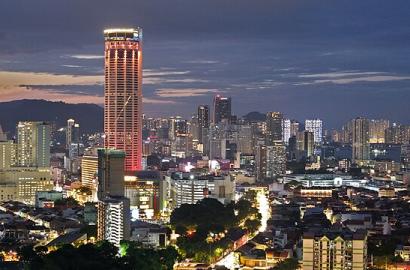Explore Our Exciting New Property Listings Now Available in Prime Locations!
LAND is the foundation upon which societies thrive, economies grow, and ecosystems flourish. In Sabah, a state renowned for its breathtaking natural beauty and rich biodiversity, the judicious management of this precious resource is more critical than ever. However, rapid urbanisation, agricultural expansion, and industrial development have placed immense pressure on its land
resources. Without a strategic and integrated approach to land use planning, Sabah risks environmental degradation, social inequity, and economic inefficiency.
This is where integrated land use planning comes into play – a vital process undertaken by local authorities and state planning agencies to regulate land use within their administrative areas.
Ideally, this process serves as a powerful instrument for safeguarding the natural environment, promoting social harmony, and fostering sustainable economic development.
Integrated land use planning is, by its very nature, holistic and comprehensive. It involves a systematic assessment of land and water potential, a thorough exploration of various land use alternatives, and a careful consideration of economic and social conditions to arrive at the most beneficial options. Its ultimate goal is to achieve balanced development and a thoughtful physical transformation of space, all aligned with common objectives and aspirations.
Undeniable importance of integrated land use planning in Sabah
In the unique context of Sabah, the significance of integrated land use planning cannot be overstated. It offers a multifaceted approach to achieving sustainable progress, which includes enabling a more effective coordination of diverse land uses – from housing and industry to recreation, agriculture, and natural resources – ultimately contributing to the creation of a balanced and livable environment for all.
By meticulously planning public infrastructure like roads, integrated land use planning also ensures that such developments are economically viable and practically address community needs. Crucially, it minimises the exploitation of remaining natural forest areas, preserving Sabah’s vital green lungs.
In addition, a well-planned landscape provides greater certainty for investors, fostering more stable conditions that attract and sustain economic growth. This, in turn, translates into tangible benefits for communities across economic, social, and environmental spheres.
Lastly, from an environmental point of view, integrated land use planning plays a pivotal role in providing essential planning guidelines that incorporate elements of adaptation and resilience to the escalating impacts of climate change. By carefully considering future climatic scenarios, integrated land use planning can help ensure that Sabah’s built environment can meet the needsbof both current and future generations.
A case study: the urgent need in Tawau and Lahad Datu districts
The urgency of integrated land use planning is starkly evident in districts like Tawau and Lahad Datu. Thriving ecosystems are the bedrock of resilient landscapes and sustainable communities, and in Lahad Datu, striking a delicate balance between economic development and environmental preservation is paramount to meeting both local and global environmental objectives.
The district’s ecosystems provide invaluable services, including vital carbon storage, crucial biodiversity conservation, and the foundation for sustainable agriculture, aligning perfectly with Malaysia’s commitments under the Convention on Biological Diversity (CBD) and the UN Framework Convention on Climate Change (UNFCCC).
However, the rapid pace of infrastructure development, such as the expanding Pan Borneo Highway and future plans for the Tawau-Lahad Datu rail link under the Sabah Structural Plan 2033, is exerting increasing pressure on natural resources and biodiversity. While these projects are vital for enhancing connectivity and economic growth, they carry the significant risk of accelerating deforestation and biodiversity loss if not carefully integrated into a robust spatial planning framework.
The improved land connectivity across major towns in Sabah, coupled with Tawau’s designation as a key growth hub and enhanced transport links to the Lahad Datu Palm Oil Industrial Cluster (POIC), are expected to drive substantial land-use changes.
Furthermore, plans for new road and rail connections between Kota Kinabalu and strategic areas along Sabah’s east coast will inevitably increase the demand for essential utilities like electricity, water, waste management, and communication services. This expansion necessitates meticulous planning to minimise further strain on Sabah’s natural resources and biodiversity, particularly given the state’s continued reliance on resource-based revenues, a primary cause of deforestation and habitat loss.
In response to these challenges, Sabah is actively working to address infrastructure growth while upholding its international commitments to the CBD and UNFCCC. Ambitious targets include maintaining 50% forest cover, designating 30% of its land as Totally Protected Areas (TPAs) – an increase from the current 26%. Integrated land use planning is the key for achieving these crucial environmental objectives.
Overcoming challenges in implementation
Despite its critical importance, the effective implementation of integrated land use planning in Sabah faces several challenges, mainly due to data and information gaps. The development of holistic and comprehensive integrated land use plans for districts like Tawau and Lahad Datu hinges on the availability of updated and accurate data and information. Therefore, bridging these data gaps is a fundamental prerequisite.
Different land sectors (e.g., forestry, agriculture, environment) often operate in silos, with overlapping mandates and weak coordination. This makes integrated planning difficult to implement consistently. An example of encroachment into forest reserves due to conflicting land titles in the northern part of Sabah is environmental degradation, as plantations are developed in ecologically sensitive areas with minimal inter-agency oversight, which has resulted in the fragmentation of important wildlife habitat in Lower Kinabatangan and some parts of the south-central part of Sabah.
At the same time, the implementation of integrated land use planning is often hindered by a communication divide. Scientific findings and solutions aimed at safeguarding the natural environment often need to be translated into “common language” that can be readily understood by laypeople and, crucially, by those in positions of authority responsible for implementing strategies and policies. Closing this communication gap between scientists and decision-makers is vital.
Local community participation and consultation need to be incorporated into decision-making processes.
Without inclusive participation, land plans may lack legitimacy or overlook local knowledge. This may result in a top-down land use policy prioritizing different land use plans over community-based land management and customary rights, leading to ongoing disputes, social hardship, and legal challenges in Sabah.
Raising awareness on the importance of integrated land use planning
Perhaps the most significant challenge for integrated land use planning is cultivating widespread awareness and acceptance of how preserving the natural environment and its resources can provide long-term benefits for sustainable development. Often, development pursued solely for immediate economic gain and short-term financial returns fails to incorporate the paramount importance of environmental preservation.
To help overcome this hurdle, WWF-Malaysia hopes to work closely with government authorities throughout the consultation process to ensure that any kind of development will not be destructive towards the environment.
Integrated land use planning involves multi-stakeholders with different backgrounds, perspectives, and interests in land use development and management. Engaging multi-stakeholders is a must and is crucial for creating inclusive, well-informed, and practical plans. This involves diverse actors, such as government agencies, local communities, and business sectors, to ensure plans reflect various perspectives and needs through effective multi-stakeholder platforms to enhance deliberative governance and improve the reconciliation of potentially conflicting interests.
Visionary leadership in integrated land use planning involves policymakers with a clear, compelling vision beyond the horizon for the future that guides the development and management of land and resources. It is not just ad-hoc plans for short-term solutions. This.vision is integrated across various sectors and stakeholders, ensuring a cohesive and sustainable approach to spatial development. These leaders effectively communicate their vision, inspire action, and foster collaboration to achieve long-term goals.
In conclusion, integrated land use planning is not merely a bureaucratic exercise; it is an indispensable framework for navigating the complexities of land development for economic growth, social safeguards, and nature preservation in Sabah. By embracing a holistic, coordinated, and forward-thinking approach, Sabah can successfully balance its economic aspirations with its profound commitment to protecting its invaluable natural heritage for the benefit of current and future generations. The journey will undoubtedly present challenges, but the rewards of a truly sustainable and harmonious Sabah are immeasurable.

Related posts:
The 5% housing discount for first-time house buyers, which was earlier given to Indian Muslims, has been extended to all, says Chow Kon Yeow.
Malaysia’s property transaction value fell 8.9% in the first quarter of 2025 (1Q2025) to RM51.42 billion, compared to RM56.47 billion a year earlier, according to the latest data from the National Property Information Centre (Napic).


